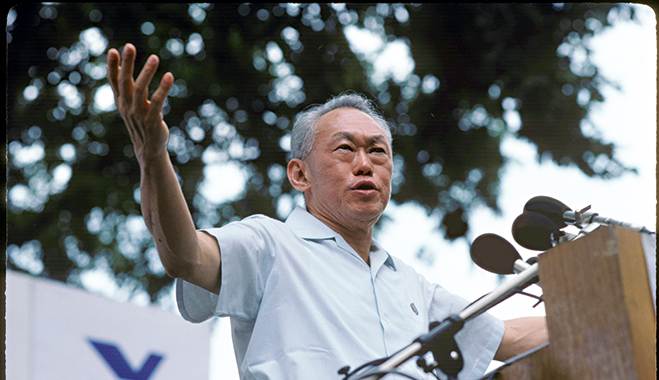
1959
The son of Chinese immigrants, Harry Kuan Yew (as he was known), became the first prime minister of Singapore in an overwhelming victory at the polls. He gave himself the hopeless task of reviving a battered country, as the trading economy of the newly independent nation had been destroyed during the Second World War. Communists were knocking on the proverbial door and civil unrest over the issue of self-rule was growing.
1965
Malaysia torpedoed Singapore’s best prospect of recovery when it expelled the fragile country from a barely two-year-old federation of nations that included Malaysia, Singapore, Sabah and Sarawa. Although deeply hurt by the snub, 32-year-old Lee Kuan Yew immediately demonstrated what would become a lifelong political skill: salvaging success from disaster. Singapore was admitted to the UN and became a member of the Commonwealth.
1967
In a bold step, Singapore took the decision to issue its own currency. Named the Singapore dollar, it was pegged to the sterling at a rate of SGD 60 per £7. The nation’s first sovereign issue was a daring gamble. The economy was weak at the time, and most of the old trade links hadn’t yet fully recovered from the conflict during the Second World War. On top of that, the fledgling nation had no experience of managing its own currency.
1973
The collapse of the sterling revealed once again the political adroitness of Lee Kuan Yew. He immediately linked the Singapore dollar to the US dollar. As the country’s commerce boomed in neighbouring countries and regions, he had the currency pegged against a trade-weighted basket of other currencies. Highly successful, the arrangement lasted for 12 years before the Singapore dollar was floated. Gross domestic product per head was just over $1,900.
1983
In the decade since the Singapore dollar was linked to the US’s, Singapore had turned into a poster nation for a tough-minded brand of economic management. Now branded a ‘benign dictator’, Lee Kuan Yew brooked little opposition, but it was hard to argue against the results. GDP per head of the growing population (now up to nearly 2.7 million) rocketed to nearly $6,700. Singapore was emerging as a global financial-sector powerhouse.
1990
After 31 years in power, the 67-year-old Lee Kuan Yew finally stepped down. He had steered Singapore through tumultuous decades, taking it from poverty to wealth. GDP per head had doubled in the last seven years to stand at $12,700 on a growing population, now over three million. But the autocratic leader didn’t let go entirely: the handpicked Goh Chok Tong replaced him as prime minister and Lee Kuan Yew hovered in the background in the new role of senior minister.
2014
As Lee Kuan Yew turned 90, Singapore was lauded as an undisputed economic triumph. GDP nudged $300bn, equivalent to nearly $37,000 per head. At $278bn, foreign reserves weren’t far behind. Astonishingly, net exports accounted for almost half of the 3.9 percent growth in GDP. A booming trade surplus had pushed up the current account of balance of payments to a whopping 8.3 percent. And the new prime minister? He was the founding father’s son, Lee Hsien Loong.
2015
On March 23, Lee Kuan Yew died at the age of 91. There followed a nationwide one-week period of mourning. As world leaders pointed out, in a single generation Lee Kuan Yew had managed to transform a disparate and multi-ethnic population, crowded into 63 islands with a total area of just over 690km sq, into a First World nation. And against the most unlikely odds, a country that never had its own currency until 1967 had become a financial centre in Asia, rivalled only by Hong Kong.


